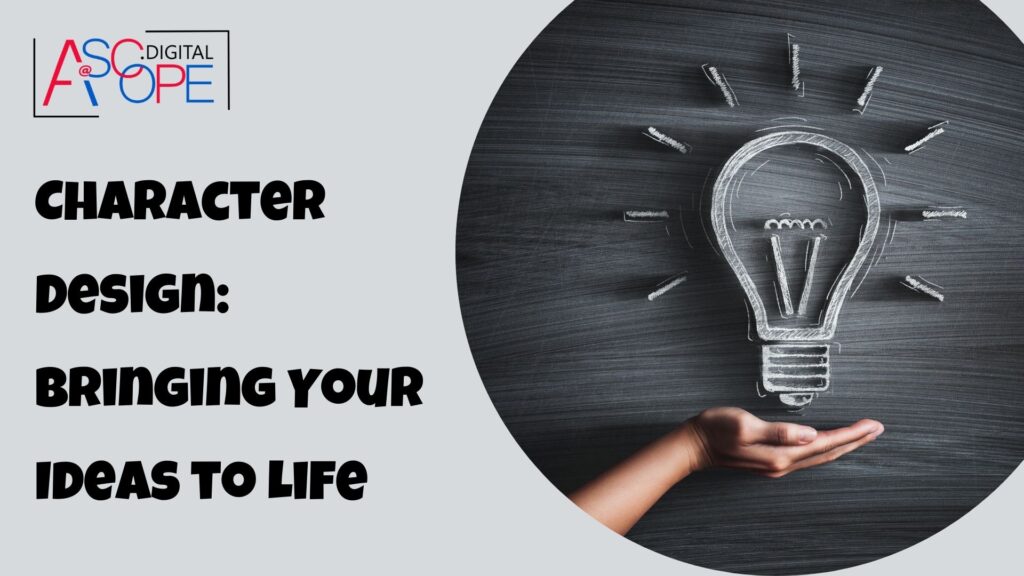Character design is an essential aspect of visual storytelling, animation, video games, and comics. It is the process of creating a character from scratch, considering various elements like personality, appearance, and role in the story. A well-designed character can make a lasting impression on the audience and significantly contribute to the success of a project. This article will guide you through the process of character design, from initial concept to final rendering, helping you bring your ideas to life.
Understanding the Basics of Character Design
1. Concept and Idea Generation
The first step in character design is to develop a clear concept. This involves brainstorming and gathering inspiration. Consider the following questions:
- What is the character’s role in the story?
- What are the character’s personality traits?
- What is the character’s backstory?
- What is the character’s physical appearance?
Answering these questions will help you form a mental image of your character and provide a solid foundation for the design process.
2. Research and Inspiration
Research is crucial in character design. Look at other character designs for inspiration, but avoid copying them. Analyze why certain designs work and how they convey personality and emotion. Study anatomy, fashion, and cultural references that might influence your character’s appearance. Creating a mood board with images, colors, and textures can also help visualize the character’s world.
3. Sketching and Thumbnails
Start with rough sketches and thumbnails. These quick drawings allow you to explore different ideas and shapes without committing to a final design. Experiment with various poses, expressions, and silhouettes. Thumbnails are particularly useful for figuring out the overall shape and proportion of the character.
Developing Your Character Design

1. Silhouette and Shape Language
A strong silhouette makes a character easily recognizable. Focus on creating a distinct and memorable outline. Use shape language to convey personality traits:
- Circles and curves suggest friendliness and softness.
- Squares and rectangles imply stability and reliability.
- Triangles and sharp angles convey danger and aggression.
2. Anatomy and Proportions
Understanding anatomy is essential for creating believable characters. Study human and animal anatomy to understand how muscles and bones work together. However, depending on your style, you might exaggerate or simplify anatomy to suit your character. Pay attention to proportions as they can drastically change how a character is perceived. For example, larger heads can make characters appear cuter, while elongated limbs can suggest agility.
3. Clothing and Accessories
Clothing and accessories play a significant role in character design. They can reveal a lot about a character’s personality, occupation, and background. Think about the character’s environment and lifestyle when designing their outfit. Use clothing to emphasize the character’s silhouette and enhance their overall design.
4. Color Theory
Color is a powerful tool in character design. It can set the mood and convey emotions. Use color theory to create harmonious color schemes. Consider the character’s personality and story role when choosing colors. For example, bright and vibrant colors can suggest energy and optimism, while muted and dark colors can imply seriousness or mystery.
5. Expression and Emotion
A character’s facial expressions and body language are crucial for conveying emotions and personality. Practice drawing different expressions and poses to bring your character to life. Consider how the character’s personality influences their expressions and movements. A confident character might have open and relaxed body language, while a shy character might appear more closed and tense.
Refining Your Design
1. Feedback and Iteration
Feedback is vital for refining your character design. Show your work to others and be open to constructive criticism. Iterate on your design based on the feedback you receive. This process helps identify areas for improvement and ensures your character is as strong as possible.
2. Finalizing the Design
Once you are satisfied with the design, create a clean, final version. This step involves refining the lines, adding details, and ensuring everything is consistent. Consider creating turnaround sheets showing the character from multiple angles and poses. These sheets are especially useful for animators and other team members who will work with the character.
3. Rendering and Presentation
The final step is to render your character. This involves adding shading, highlights, and textures to give the character depth and realism. Consider the lighting and environment when rendering. Finally, present your character in a way that showcases their personality and story role. This might include a character sheet with various poses and expressions, or a full illustration showing the character in action.
Practical Tips for Character Design

1. Keep It Simple
While details can enhance a character, overcomplicating the design can make it less effective. Focus on the essential elements that define your character and avoid unnecessary complexity.
2. Stay Consistent
Consistency is crucial in character design, especially for projects like animation or comics where the character appears multiple times. Ensure that the character’s proportions, colors, and details remain consistent throughout.
3. Think About the Story
A good character design is closely tied to the story. Consider how the character’s design reflects their role and personality within the narrative. A well-designed character should be able to convey their story and traits visually.
4. Experiment and Have Fun
Character design is a creative process, so don’t be afraid to experiment and have fun with it. Try different approaches and styles until you find what works best for your character.
Case Studies: Iconic Character Designs
1. Mickey Mouse
Mickey Mouse is one of the most iconic characters in animation history. His simple design, featuring round shapes and a friendly expression, makes him instantly recognizable. Over the years, Mickey’s design has evolved, but the core elements have remained consistent, ensuring his enduring appeal.
2. Batman
Batman’s design is a perfect example of how shape and color can convey personality and story. His dark color palette and angular shapes suggest mystery and strength. The bat motif is incorporated into his costume, emphasizing his identity and mission.
3. Pikachu
Pikachu from the Pokémon series is another excellent example of effective character design. Its cute, round shapes and bright yellow color make it appealing to a wide audience. Pikachu’s design is simple yet expressive, allowing it to convey a range of emotions easily.
Tools and Resources for Character Design

1. Digital Software
There are various digital tools available for character design, including:
- Adobe Photoshop: A versatile tool for digital painting and illustration.
- Clip Studio Paint: Popular among comic artists and illustrators for its robust features.
- Procreate: An iPad app that offers powerful tools for sketching and painting.
2. Traditional Media
Traditional media, such as pencils, inks, and watercolors, can also be used for character design. Many artists start with traditional sketches before moving to digital tools for refinement.
3. Online Resources
There are numerous online resources available to help you improve your character design skills:
- Tutorials and Courses: Websites like Udemy, Skillshare, and YouTube offer tutorials and courses on character design.
- Communities and Forums: Joining online communities and forums, such as DeviantArt or ArtStation, can provide valuable feedback and inspiration.
- Books: There are many books on character design, such as “Creating Characters with Personality” by Tom Bancroft and “The Art of Character Design” by David Colman.
Character Design: Bringing Your Ideas to Life
Character design is a crucial aspect of storytelling in various mediums, including animation, video games, and graphic novels. By creating compelling and unique characters, you can captivate your audience and enhance the overall narrative. Thus, mastering the art of character design is a good way to improve engagement and connect with your target audience. Read more on the other reasons why your characters may not resonate with your audience and reasons why you website isn’t getting traffic. The key to successful character design lies in understanding the character’s personality, backstory, and role within the story. By focusing on these elements, you can create characters that are not only visually appealing but also deeply engaging and relatable. Whether you’re a seasoned artist or a beginner, investing time in character design can significantly elevate your project, making it more memorable and impactful.
Conclusion
Character design is a fascinating and rewarding field that combines creativity, storytelling, and technical skill. By understanding the basics, developing your design thoughtfully, and refining it through feedback and iteration, you can create memorable characters that bring your ideas to life. Remember to keep your designs simple, consistent, and story-driven, and don’t be afraid to experiment and have fun with the process. With practice and dedication, you can master the art of character design and create characters that resonate with audiences around the world


